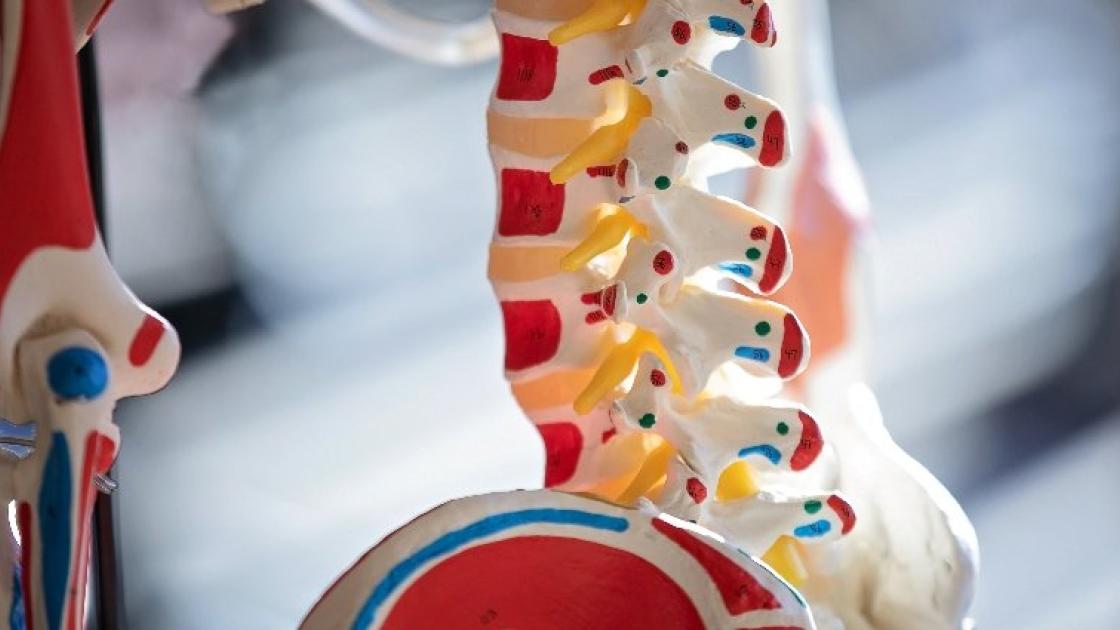
Caring for an aching back
Back and neck pain are among the most common ailments in America. Research shows 8 out of 10 people will have back pain at least once in their lives. If you are struggling with musculoskeletal pain, aka back pain, we encourage you to reach out to the SIU Medicine Spine Center. We are committed to finding an individualized plan of care that will meet your specific needs and goals.
Common spine and disc conditions
When a patient with back or neck pain comes to SIU Medicine, our experienced multidisciplinary spine team begins the process with a detailed interview to help you decide the best way to proceed within the Neuroscience Institute. The institute encompasses neurology, neurosurgery, psychiatry and physical medicine & rehabilitation teams. Using specialized tests and techniques to help make an accurate diagnosis, here are five of the most common conditions we see.
- A herniated or bulging disc protrudes out of its normal alignment in the spinal column and presses against nearby nerve roots and other tissues causing pain and numbness
- Sciatica occurs when the right or left sciatic nerve in the lower back becomes compressed and irritated, often from degenerative changes, trauma or by a herniated or bulging disc
- Spinal stenosis is a narrowing of the spinal canal or neural foramen
- Degenerative disc disease causes thinning and degradation of a spinal disc over time
- General neck and back pain for any reason
Signs and symptoms of back pain can range from mild to extremely debilitating. They often include sharp, dull and/or aching pain in the neck or spine, muscle spasms and stiffness. If a spinal nerve root is being pinched by an injured disc or narrowed joint space, numbness, weakness, tingling and abnormal reflexes may occur in the arm or leg that nerve runs through.
Despite their common occurrence, it is not always possible to know exactly what is causing back pain or other symptoms. These cases are often called “idiopathic.” Fortunately, even idiopathic back pain can respond well to interventions like physical therapy or other non-surgical options.
Causes & risk factors of spine and disc conditions
Part of the reason back and neck pain are so common is because the leading risk factors and causes are relatively common as well. For instance, advancing age is often associated with disc problems like herniation or degenerative disc disease, since these tissues can lose their elasticity and vascularity as people get older. Advancing age is also a common risk factor for osteoarthritis.
Other potential causes of back pain include:
- Trauma, such as a fall, accident or injury
- Overuse, especially if it involves heavy and/or repetitive lifting or bending
- Prolonged exposure to vibration
- Infection or illness
- Smoking
- Obesity
- Poor posture, which can often strain the tissues in the spine and/or weaken the core
Help for your spine and disc condition
SIU Medicine’s Spine Center has some of the area’s leading specialists in the diagnosing, treating and management of conditions affecting the spine, spinal cord, and peripheral nerves. We offer a variety of diagnostic and therapeutic treatments for neck and back pain, including lifestyle modification, weight management, physical therapy, interventional pain procedures, surgery and more.
Call us at 217-545-8000 to schedule an appointment and get to the root of your back pain.




